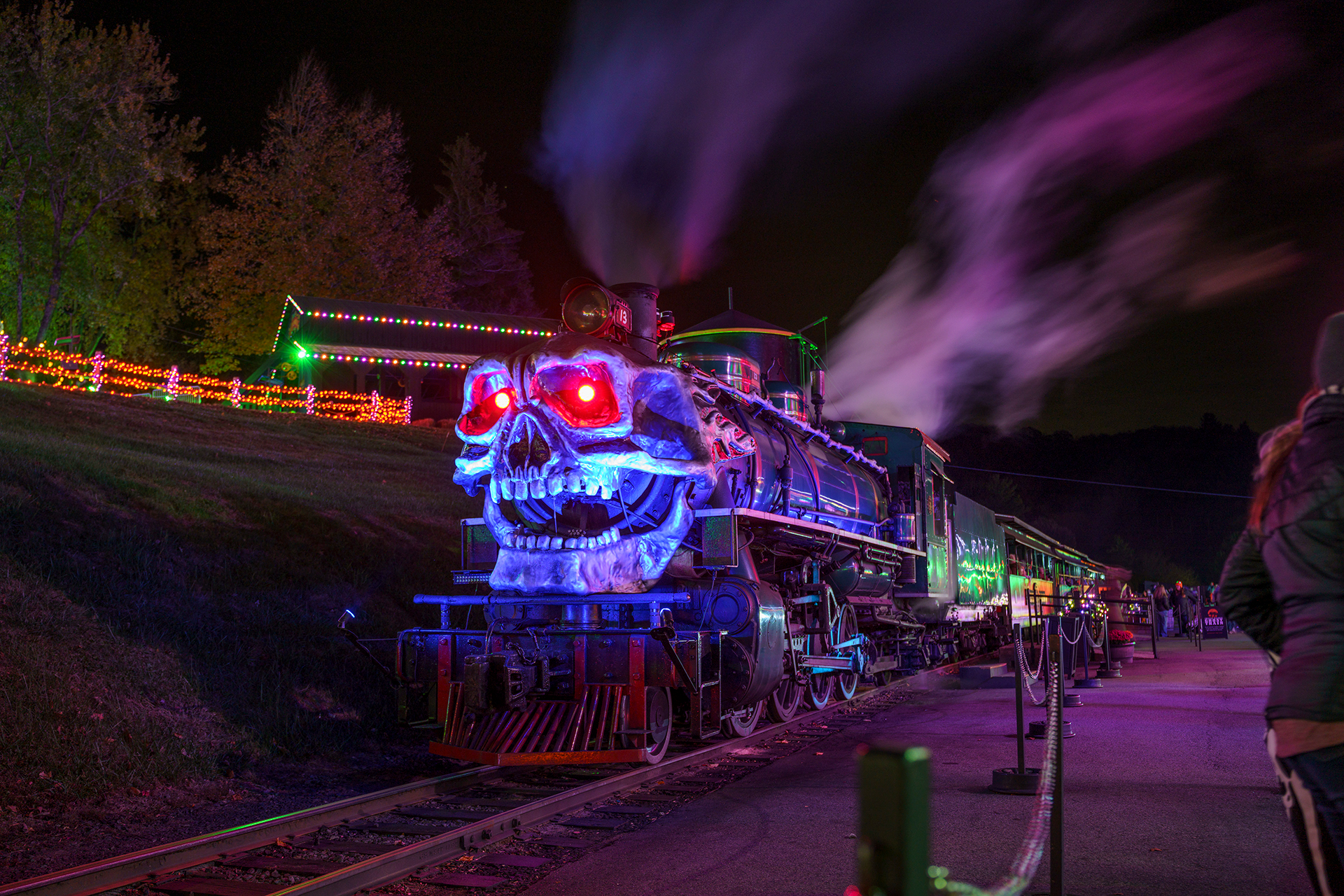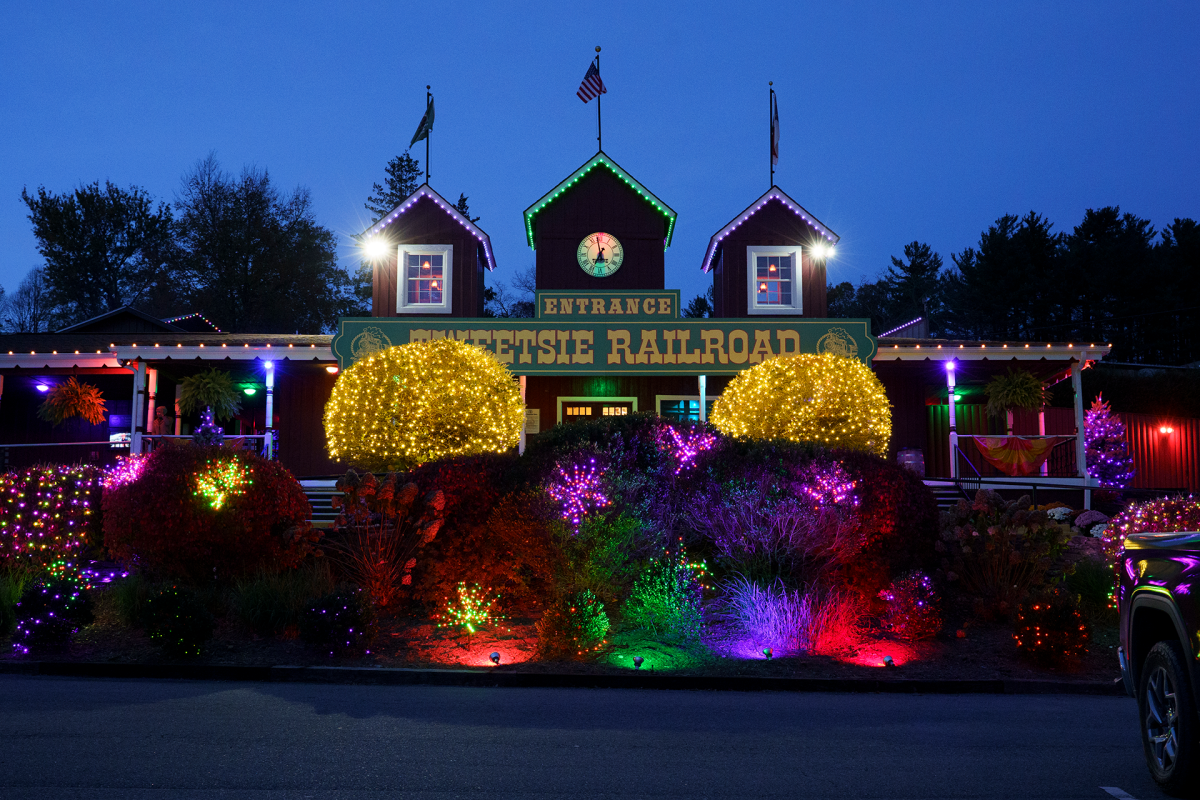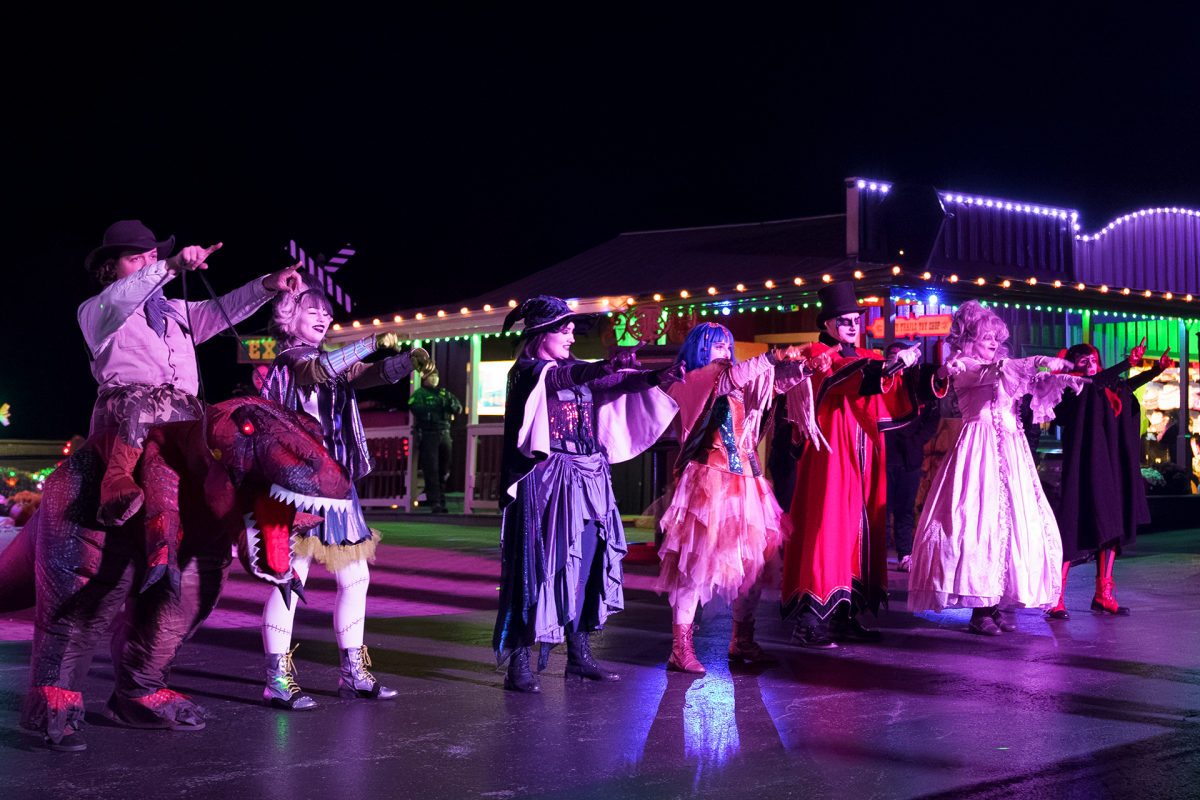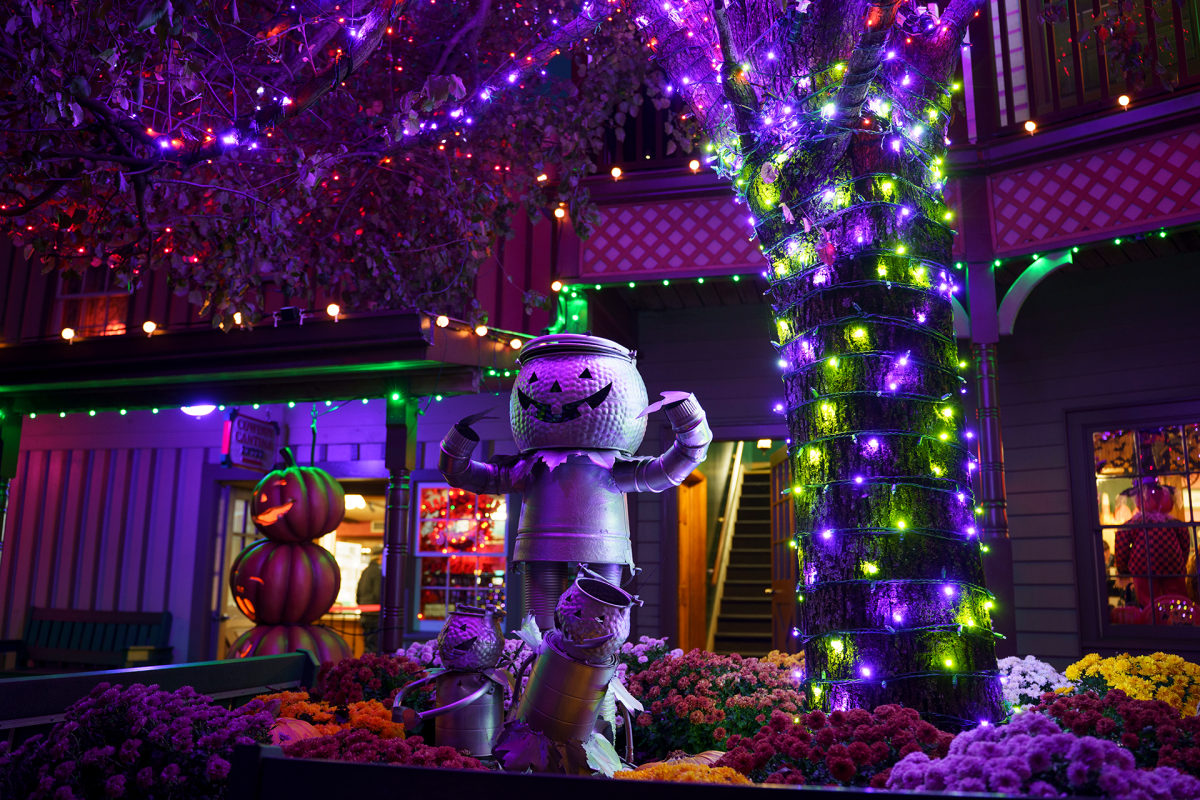The smell of burning coal fills the chilly autumn air as night descends on Tweetsie Railroad. As anticipatory organ music is played through a loudspeaker, a long line of guests wait for the theme park gates to open, surrounded by vibrant lights adorning every nook and cranny of the park.
Suddenly, a single firework shoots into the air, shades of yellow and gold lighting up the darkening sky. The gates open, and soon, Tweetsie’s Ghost Train rolls into the station.
Unlike Locomotive No. 190’s typical presentation during daytime hours, during Ghost Train, the engine sports a large skull attached to the front. The skull’s jaws can open and close, and, accompanied by blue lighting and glowing red eyes, sparks and fire shoot out the front of the train.
No. 190’s whistle has been changed for Ghost Train, too. Instead of its typical friendly greeting which earned the original locomotives their “Tweetsie” nickname, during Ghost Train, a shrill, haunting whistle echoes through the mountains of the High Country.
Meghan Minton, the marketing director of Tweetsie Railroad, said the entire park transforms at night.
“We say ‘wild west by day, Ghost Train by night,’” Minton said.
At nighttime, Tweetsie runs a Haunted House, the Freaky Forest attraction, the Palace Spooktacular Show and The Boneyard, which includes the Warp Tunnel and the Black Hole attractions. Fall and Halloween-themed lights are on display throughout the park, and Tweetsie’s Main Street bustles with large crowds of parkgoers.
Park employees dressed in costumes dance along to music played by a DJ, and trick-or-treat stations are spaced throughout the park. Some shops are still serviced during Ghost Train, and visitors can buy treats in the theme park, such as hot chocolate made with in-house fresh fudge.
This year, the event began Sept. 19 and will run through Nov. 1 every Friday and Saturday night, starting at 7:30 p.m. and ending at 10:30 p.m.
Once aboard, parkgoers are introduced to the theme that carries out over the three mile train ride: the Appalachian Monster Project. In the story, a group of students go missing after investigating paranormal monster activity, and over the duration of approximately 30 minutes, the live, interactive show ensues both on and off the train.
In the past, Minton said that steam-powered Locomotive No. 12, the last surviving narrow gauge engine that serviced the East Tennessee & Western North Carolina Railroad, was used for the Ghost Train. No. 190, which was constructed in 1943 and serviced on railroad in Alaska where it was used to transport building supplies during WWII. Tweetsie is the primary manufacturer of parts used for the two trains, and all service to the locomotives is completed in-house. Tweetsie also runs a narrow-gauge steam locomotive shop that services trains used in other parks.
Currently, No. 12 — which is over 100 years old, weighs in at over 60 tons and is listed on the National Register of Historic Places — is going through major restorations. Because of this, Minton said the team sometimes has only an hour to convert over to the Ghost Train after daytime hours, using a small crane to mount the large skull to the front of No. 190.
Approximately 65 employees work on the entertainment team alone during the Ghost Train season, with many being App State students, Minton said.
Minton said this is the first full year of Ghost Train festivities since Hurricane Helene, which forced the park to close down and Ghost Train operations to halt after only one weekend of operation. Tweetsie took a “hard hit” financially during the hurricane, as fall is a busy time of year for the park, she said.
Entertainment Director John Setzer said preparations for the Ghost Train festivities began in late February and early March, and Tweetsie had to order props early in the season to ensure their arrival in time.
From there, the Ghost Train team works early in the year to come up with timelines, attractions, themes, new ideas and layouts.
“Each area takes about two weeks to complete. As soon as we go back to part-time operations in mid-August, we’ll start with the Freaky Forest first, and we’ll move to the track, and the Haunted House has to happen after Labor Day, for various events,” Setzer said.
Rehearsals are also scheduled ahead of the season, along with videography and pyrotechnical elements, Setzer said.
Tweetsie tends to keep attractions that might be scarier separate so that parkgoers don’t have to be worried about being scared as they traverse Main Street and other areas, Setzer said.
Certain activities cater to a range of visitors, and some activities appeal to those of almost all ages, he said. Attractions like the haunted house, Freaky Forest and train ride are recommended for those ages eight and up.
“I always tell folks, ‘you know how your kid is going to react,’” Setzer said. “Sometimes, we have 5 year olds that love it, sometimes we have 13 year olds that are terrified.”





